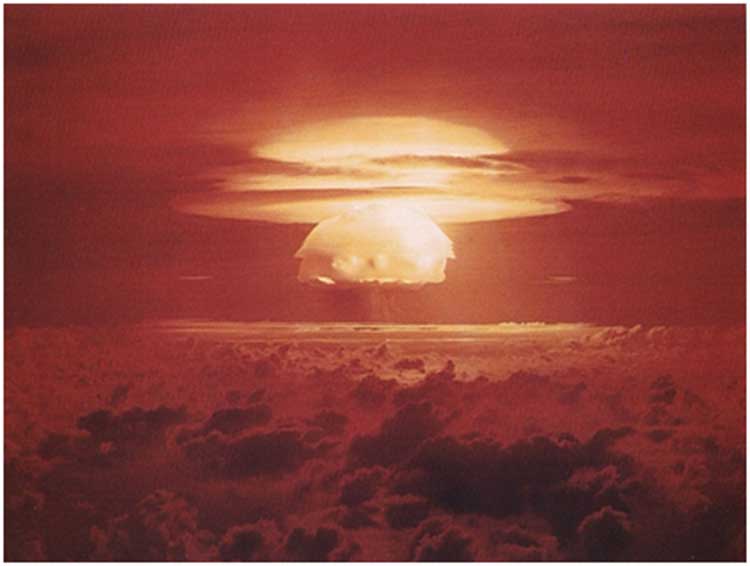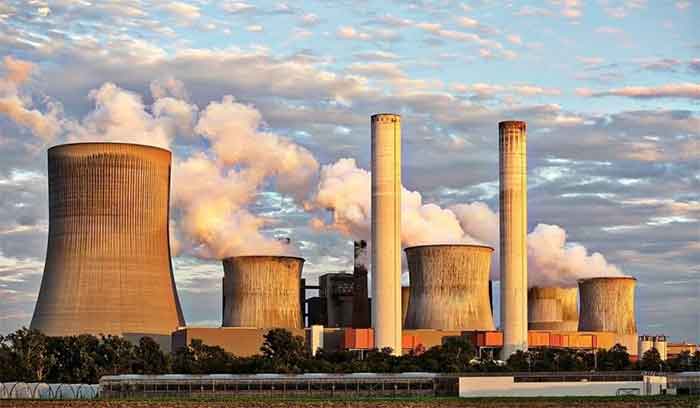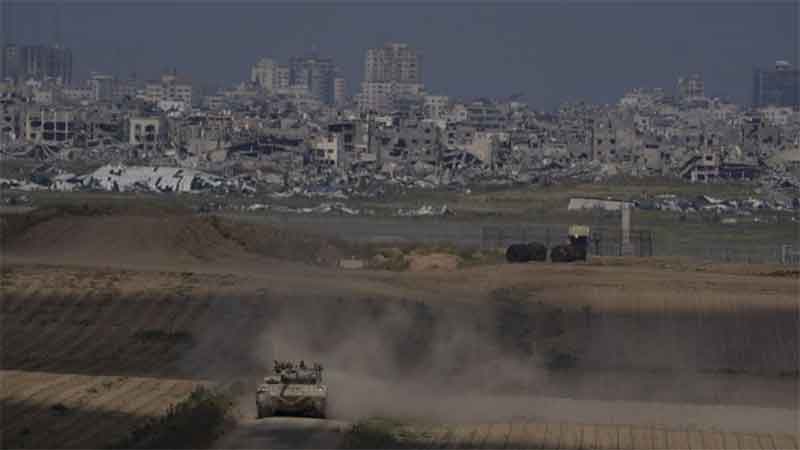
When world leaders gather in Scotland next week for the COP26 climate change conference, activists will be pushing for drastic action to end the world’s catastrophic reliance on fossil fuels. Consciousness about the climate emergency has skyrocketed in recent years, while government responses remain meager. But one aspect of extreme climate jeopardy—“nuclear winter”—has hardly reached the stage of dim awareness
Wishful thinking aside, the threat of nuclear war has not receded. In fact, the opposite is the case. The Bulletin of the Atomic Scientists has been moving the “Doomsday Clock” ever closer to cataclysmic midnight; the symbolic hands are now merely 100 seconds from midnight, in contrast to six minutes a decade ago.
A nuclear war would quickly bring cataclysmic climate change. A recent scientific paper, in sync with countless studies, concludes that—in the aftermath of nuclear weapons blasts in cities—“smoke would effectively block out sunlight, causing below-freezing temperatures to engulf the world.” Researchers estimate such conditions would last for 10 years. The Federation of American Scientists predicts that “a nuclear winter would cause most humans and large animals to die from nuclear famine in a mass extinction event similar to the one that wiped out the dinosaurs.”
While there’s a widespread myth that the danger of nuclear war has diminished, this illusion is not the only reason why the climate movement has failed to include prevention of nuclear winter on its to-do list. Notably, the movement’s organizations rarely even mention nuclear winter. Another factor is the view that—unlike climate change, which is already happening and could be exacerbated or mitigated by policies in the years ahead—nuclear war will either happen or it won’t. That might seem like matter-of-fact realism, but it’s more like thinly disguised passivity wrapped up in fatalism.
In the concluding chapter of his 2017 book “The Doomsday Machine,” Daniel Ellsberg warns: “The threat of full nuclear winter is posed by the possibility of all-out war between the United States and Russia. … The danger that either a false alarm or a terrorist attack on Washington or Moscow would lead to a preemptive attack derives almost entirely from the existence on both sides of land-based missile forces, each vulnerable to attack by the other: each, therefore, kept on a high state of alert, ready to launch within minutes of warning.”
And he adds that “the easiest and fastest way to reduce that risk—and indeed, the overall danger of nuclear war—is to dismantle entirely” the Minuteman III missile force of ICBMs comprising the land-based portion of U.S. nuclear weaponry.
The current issue of The Nation magazine includes an article that Dan Ellsberg and I wrote to emphasize the importance of shutting down all ICBMs. Here are some key points:
- “Four hundred ICBMs now dot the rural landscapes of Colorado, Montana, Nebraska, North Dakota and Wyoming. Loaded in silos, those missiles are uniquely — and dangerously — on hair-trigger alert. Unlike the nuclear weapons on submarines or bombers, the land-based missiles are vulnerable to attack and could present the commander in chief with a sudden use-them-or-lose-them choice.”
- Former Defense Secretary William Perry wrote five years ago: “First and foremost, the United States can safely phase out its land-based intercontinental ballistic missile (ICBM) force, a key facet of Cold War nuclear policy. Retiring the ICBMs would save considerable costs, but it isn’t only budgets that would benefit. These missiles are some of the most dangerous weapons in the world. They could even trigger an accidental nuclear war.”
- “Contrary to uninformed assumptions, discarding all ICBMs could be accomplished unilaterally by the United States with no downsides. Even if Russia chose not to follow suit, dismantling the potentially cataclysmic land-based missiles would make the world safer for everyone on the planet.”
- Frank von Hippel, a former chairman of the Federation of American Scientists who is co-founder of Princeton’s Program on Science and Global Security, wrote this year: “Strategic Command could get rid of launch on warning and the ICBMs at the same time. Eliminating launch on warning would significantly reduce the probability of blundering into a civilization-ending nuclear war by mistake. To err is human. To start a nuclear war would be unforgivable.”
- “Better sooner than later, members of Congress will need to face up to the horrendous realities about intercontinental ballistic missiles. They won’t do that unless peace, arms-control and disarmament groups go far beyond the current limits of congressional discourse — and start emphasizing, on Capitol Hill and at the grassroots, the crucial truth about ICBMs and the imperative of eliminating them all.”
At the same time that the atmospheric levels of greenhouse gases have continued to increase, so have the dangers of nuclear war. No imperatives are more crucial than challenging the fossil fuel industry and the nuclear weapons industry as the terrible threats to the climate and humanity that they are.
Norman Solomon is co-founder and national coordinator of RootsAction.org. His books include “War Made Easy: How Presidents and Pundits Keep Spinning Us to Death“ (2006) and “Made Love, Got War: Close Encounters with America’s Warfare State” (2007).
Originally published by CommonDreams.org
This work is licensed under Creative Commons (CC BY-NC-ND 3.0). Feel free to republish and share widely.














































